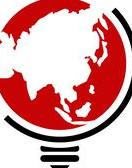
Southeast Asia is a treasure trove mix of lush rainforests, volcanoes, mountains, lakes, rivers, seas and the perfect beach climate year around. You can explore temples in the morning, beach it all afternoon and go mangrove-kayaking at night. You won't be bored for a single moment. Still, all this fun is possible only if you make the right preparations for your travel.
- Taking Health Precautions

Southeast Asian countries are still rife with diseases that have been eradicated in the west. Consult your health practitioner and take all the relevant vaccinations in preparation. Bird flu (H1N1) may not be a huge risk these days, but it still strikes. Flu can be hard to get rid of too, especially if you are infected by a tough strain. So don't make the mistake of thinking you need to take shots only for the biggies. Everything counts.
- Making Budget Preparations

You can survive on very little in Southeast Asia, or end up spending a lot of money. That depends on you. However, remember to carry change in small notes and coins to deposit at temples. You might be besieged by beggars and small change will come to your rescue. Allot a certain budget for souvenirs, and a daily budget for transport. If you take this precaution, you'll be able to stick to your budget. Be careful with street hawkers - they invariably quote too high, expecting you to bargain. Be careful of pickpockets too.
- Basic Food Precautions
A tummy upset or two are quite likely when you travel to a different country. Insist on proper food and water hygiene, and avoid eating at suspicious-looking food stalls. Eat only at those stalls that are frequented by well-to-do locals. Drinking tap water is not safe, even if you're told it is safe. Carry a small water purifier with you, or a pack of water-purifying tablets. Do not eat raw vegetable salads or fruit that's cut up in an outside environment. Eat well-cooked food and you'll be all right.
- Preparing for the Weather

Southeast Asian countries enjoy a purely tropical climate, which means severe heat and humidity the year round. There's very little variance in the weather, even with two annual monsoons. It's true though that each country in the southeast has its own micro-climate. So if you are not fond of heat, visit during the monsoons, or during the slightly cooler winter days. Be ready to face the heat and carry some cooling soda capsules with you when you are busy enjoying your Singapore activities.
- Getting the Right Visas
Southeast Asia allows visa-free entry, or visa upon arrival, and even e-visas. However, be sure to get the right visa for each country you're visiting and follow all the rules. Don't assume that if you are visiting Singapore you will be welcome in Malaysia without a visa. Rules change and it's best to stay on top of regulations than become a target. Read up on visa requirements for each country on your bucket list, and consult a travel agency for Southeast Asia while planning your trip.
- Ensure Cellphone Connectivity
Southeast Asia uses the GSM cellular standard on a 900/1800 band. If your cell phone is compatible with the GSM standard, you can enable roaming and use it all over the southeast. Be sure to check with your cellphone provider whether your package includes international roaming. Also, unlock your SIM so you can use local prepaid SIM cards. This option works out better if you're planning to make a number of international calls. Roaming charges can be exorbitant with some providers, so keep both options open.
- Check Up On Internet Connectivity
You may not enjoy the same level of freedom while accessing the internet in Southeast Asia. The Philippines has no set restrictions, but every other country in the southeast does. You'll find that some websites are blocked, and some websites are thoroughly monitored. There are ways to tweak your smartphone to get past these restrictions, but we recommend against those. Malaysia is especially strict, and so are Vietnam, Cambodia and Myanmar. Do check with the local laws with regard to internet usage. You don't want to find yourself in a litigious position while traveling.
Given the hot and humid climate, it's best to pack only light cotton or linen clothing that is UV-resistant. Carry some UV-resistant sunscreen lotion as well. Malaysia is a Muslim country, so please take care to cover your shoulders and knees. Pack clothing that allows you freedom of movement while being respectful of Southeast Asian cultures. Be especially careful with your wardrobe when visiting temples, mosques, or churches. If you're visiting during the monsoon, you'll need Macintoshes, a portable umbrella and some warm clothing. Do not carry any prescription drugs unless you have a letter from your doctor. Check if any prescription drug you're using is considered a controlled drug in Southeast Asia. Remember, even if a drug is considered legal in your country, you could face the death penalty for it in Southeast Asia.
- Grab Some Travel and Medical Insurance
Both travel and medical insurance are critical when you're traveling to Southeast Asia. Many regions are miles away from the nearest medical facility. For example, if you get bitten by a Komodo dragon on a remote Thai island, there'll be no medical services nearby. You'll have to be airlifted to a city and you'll need a good international medical insurance for that. Also note that travel insurance will not cover you at every destination or for every adventure. Read the fine print of the coverage before you sign the dotted line.
It's wonderful to travel, especially to somewhere as magical as Southeast Asia. However, travel has its pitfalls, and it's best to be as thoroughly prepared as possible in every way. If you are a bit too prepared, don't beat yourself up. It's better to be over-prepared than to face an adverse situation without the right tools.

